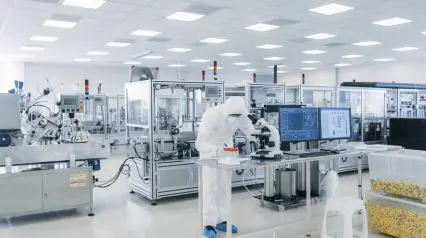What are the EU GDP Guidelines?
The EU Good Distribution Practices (GDP) guidelines are a set of standards that organizations are encouraged to follow when storing, transporting, and distributing goods such as pharmaceuticals. Companies that manufacture or import medicines in the European Union are required to follow these guidelines as they are essential in maintaining the safety and quality of medicinal products.
The basis of these distribution guidelines is that storage facilities for these products must be controlled. Considering that the temperature, humidity, lightness, and cleanliness of a storage facility may impact the safety and effectiveness of medicines, it’s important that these medicines are stored in optimal conditions. The EU GDP guidelines are in place to ensure that organizations always store medicines in the proper facilities.
Importance
The most important reason to follow the distribution guidelines set by the EU is to keep patients safe. These guidelines are in place to protect patients from medicines stored in poor conditions, which affects efficacy and safety. These distribution standards also protect patients from counterfeit products, which can be dangerous.
Secondly, following EU GDP guidelines is important for a company’s reputation. In this industry, it’s critical to maintain a certain reputation to ensure that your patients and the public trust you to distribute high-quality and safe products. Showing that you adhere to the EU GDP guidelines is a great way to build trust between the organization and its clientele.
Lastly, failure to follow the EU GDP guidelines while distributing or manufacturing medicines in the EU can result in hefty fines and legal action. This is because all pharmaceutical companies must follow the guidelines as a legal obligation to ensure the safety of their products.
Pillars of the EU GDP Guidelines
While the EU GDP guidelines are comprehensive and detailed, they are built on five main pillars. If you’re looking to implement and follow the EU GDP guidelines in your organization, it’s crucial to understand these pillars. So, let’s dive into the main foundation of the EU GDP guidelines to give you a better idea of how to understand them.
Quality Management System
Maintaining a quality management system is crucial in the EU GDP guidelines. It’s essential for companies to ensure that their products always meet quality standards before they are stored or distributed. To do that, it’s best to have a comprehensive quality management system in place.
Personnel
Another pillar of the EU GDP guidelines is personnel. Training employees in the proper manufacturing, handling, and distribution of medicinal products is critical in these guidelines. Having everyone on the team on the same page regarding the best practices is a great way to maintain quality in your operations.
Premises and Equipment
Storage facilities and all transportation equipment must be controlled and well-maintained according to the guidelines. Regular auditing of practices and facilities is required to ensure that systems remain as functional as possible and meet the standards set by the EU.
Documentation
Transparency is key when managing medicinal goods. This is why the guidelines state that companies must document their distribution and manufacturing processes. Aside from allowing transparency, it makes it easier to find the source of any potential problems that may arise.
Digitize the way you Work
Empower your team with SafetyCulture to perform checks, train staff, report issues, and automate tasks with our digital platform.
Get Started for FreeTransportation
There are strict requirements for transportation equipment and vehicles for medicinal products. This includes temperature controls, regular monitoring, risk assessments, and strategizing to prevent any incidents that may impact product quality.




